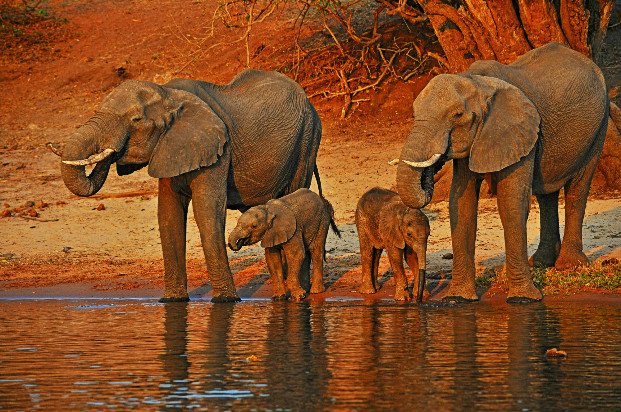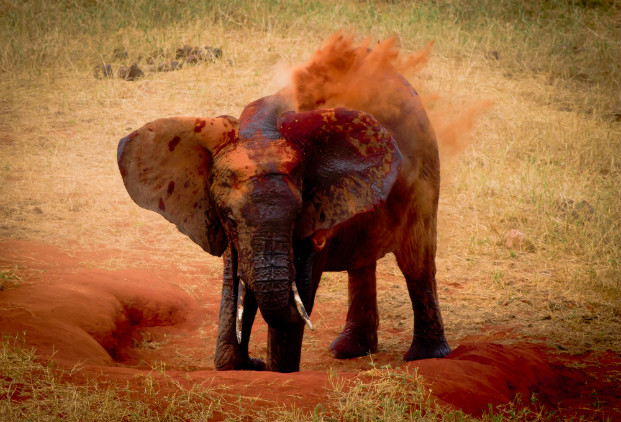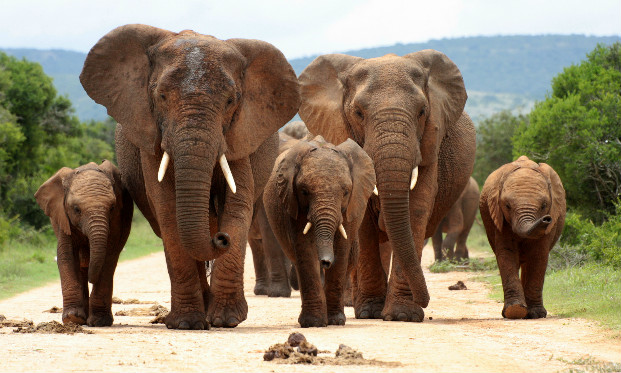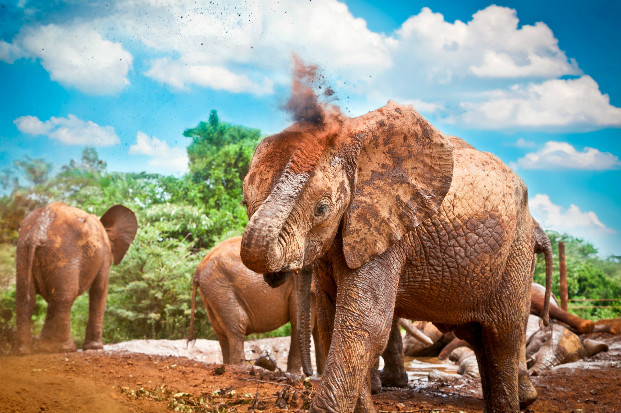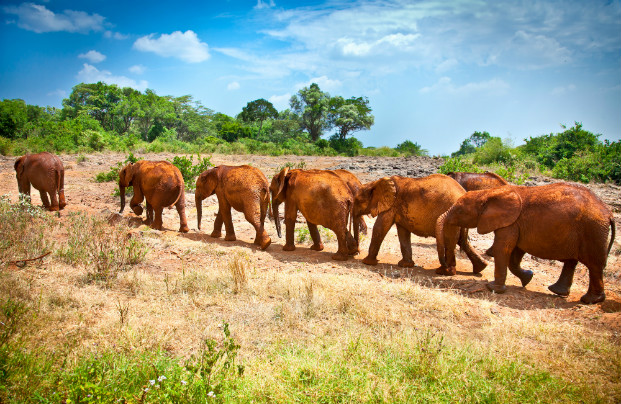As the world’s largest land mammal the African elephant is unmistakable. But for how much longer will it roam in the wild? It’s under great pressure from human action. They once roamed widely across Africa but now their movements are constrained by human settlement and therefore are rarely found outside protected areas.
Despite being in a reserve it does not prevent their persecution at the hands of poachers. Elephant’s are targeted for their teeth in the form of tusks for the ornamental trade. One elephant is killed every 15 minutes for its ivory, at this rate The David Sheldrick Wildlife Trust predict the animal could be extinct in the wild by 2025. This continued demand for ivory is fuelled from parts of Asia and the USA.
Vote for more elephant facts at elephant’s teeth and the elephant’s trunk.
The elephant is one of the Big Five. To find out the other four animals that make up the Big Five please check out our article: 25 astonishing facts about Africa’s Big 5
1. Elephant memory
Elephants are highly intelligent with well-developed memories. This allows them to return to seasonal watering holes, grieve for the dead, harbour grudges and welcome back long lost herd members after years apart.
2. Trunk dexterity
The African elephant has two finger like projections at the end of its trunk. These are so sensitive and dextrous that it can pick up a needle from a flat surface.
3. Trunk at birth
Elephants are born with a stunted trunk which rapidly elongates over a few days. However, it takes three months for the calf to master this complicated tool.
4. Make up of an elephant trunk
An elephant’s trunk which consists of over 100,000 muscles and tendons is formed by the merging of the nose and the upper lip.
5. Thermoregulation
Every 20 minutes all the blood in an elephant’s body is pumped through its ears. This plays an essential part in regulating its temperature as heat is lost from the blood vessels which lie just below the surface of the skin.
6. Cooling down
Elephants do not have sweat glands but they do cool down when water evaporates off their body. In times of extreme conditions, they sometimes put their trunk down their throat and suck water up which they then squirt over their body.
7. Largest elephant
The largest elephant ever recorded was a bull that stood 4 metres at the shoulder and weighed an estimated 10 tonnes.
8. Speed
Elephants will normally walk at 7 kph but can easily push this to 12 kph by striding out. Remarkably they can reach a top speed of 40kph. Faster than Usain Bolt’s 36 kph.
9. Musth
Elephant bulls periodically go into musth, this is a bological condition unique to them during which testosterone levels rise dramatically. A full overview of the condition can be found in our dedicated article on elephant musth written by an experienced trails guide.
Frequently asked questions
How do elephants help the environment?
Elephants are important to the ecosystem for many reasons: they use their tusks to dig for water which creates water sources for other animals, they push over trees which then become homes for smaller animals, they eat shoots of trees and shrubs which keep the plains open.
Elephant poo is full of seeds which sprout in new areas and many insects, dung beetles in particular, will live off elephant dung.
Discover more – Elephant stories
Face to face with an elephant in musth when on foot
The must swagger of an African Elephant
African elephant pictures

The moment Rhodes spoke to the bull for the first time. Photo: © Jane Cooke
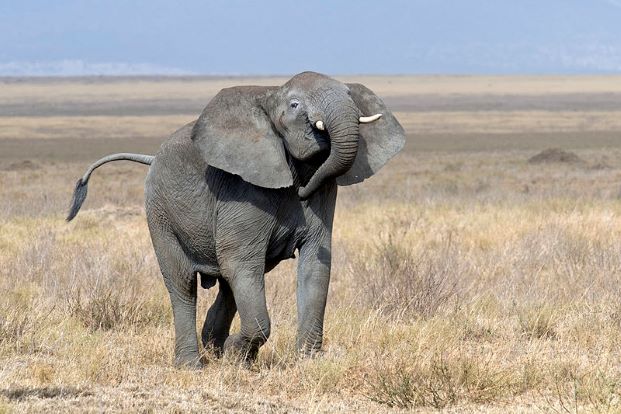
Yathin S Krishnappa, CC BY-SA 3.0, via Wikimedia Commons
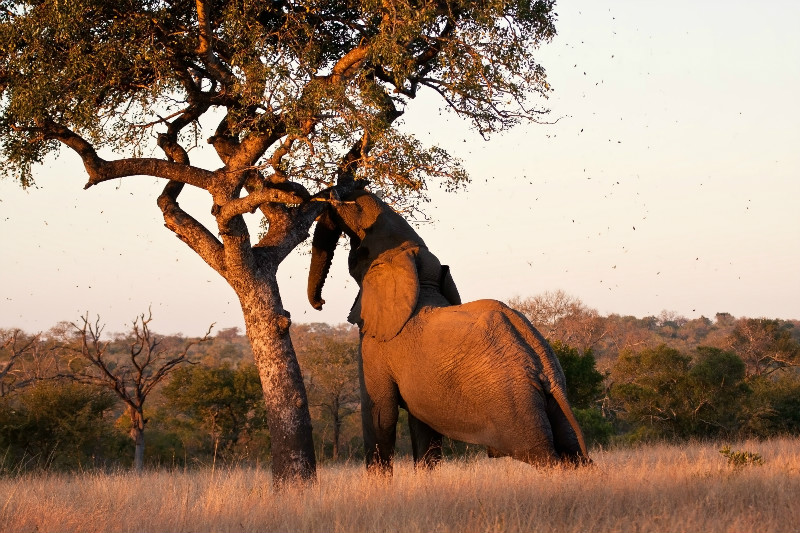
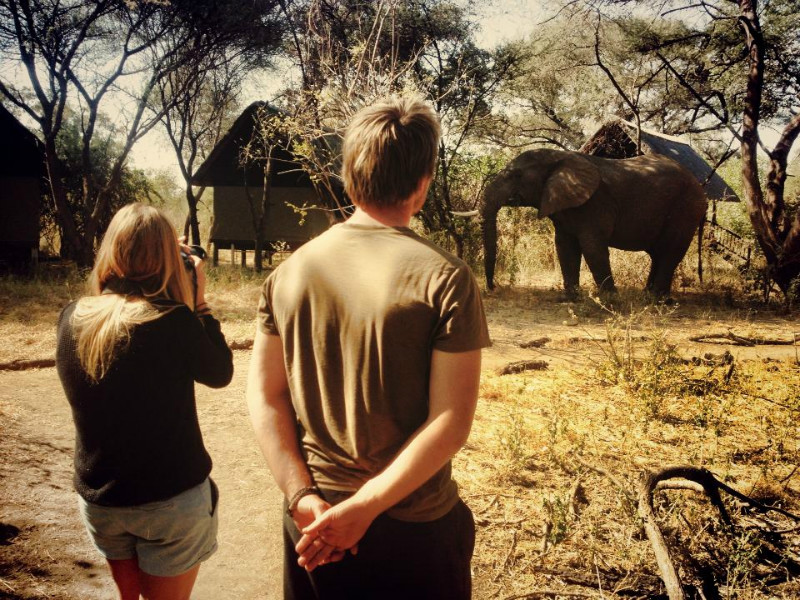
© Jomi Krobb
Vote for the fact you find most fascinating
Every 20 minutes all the blood in an elephant’s body is pumped through its ears. This plays an essential part in regulating its temperature as heat is lost from the blood vessels which lie just below the surface of the skin.
Elephants will normally walk at 7 kph but can easily push this to 12 kph by striding out. Remarkably they can reach a top speed of 40kph. Faster than Usain Bolt’s 36 kph.
Elephants are highly intelligent with well-developed memories. This allows them to return to seasonal watering holes, grieve for the dead, harbour grudges and welcome back long lost herd members after years apart.
Elephants do not have sweat glands but they do cool down when water evaporates off their body. In times of extreme conditions, they sometimes put their trunk down their throat and suck water up which they then squirt over their body.
The African elephant has two finger like projections at the end of its trunk. These are so sensitive and dextrous that it can pick up a needle from a flat surface.
Elephants are born with a stunted trunk which rapidly elongates over a few days. However, it takes three months for the calf to master this complicated tool.
An elephant’s trunk which consists of over 100,000 muscles and tendons is formed by the merging of the nose and the upper lip.
The largest elephant ever recorded was a bull that stood 4 metres at the shoulder and weighed an estimated 10 tonnes.


